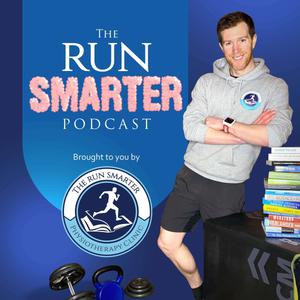
The Run Smarter Podcast
Brodie Sharpe
Expand your running knowledge, identify running misconceptions and become a faster, healthier, SMARTER runner.
- 30 minutes 24 secondsWhat is Shockwave & Is It Effective?
Learn more about Brodie's Research Database & AI Assistant 📄🔍
Paper title: Sex Differences and Extracorporeal Shockwave Therapy Outcomes in Runners with Achilles or Hamstring Tendinopathy
Episode Summary:
In this episode of the Run Smarter Podcast and Overcoming Proximal Hamstring Tendinopathy Podcast, Brodie Sharpe dives into the science behind shockwave therapy and its effectiveness for treating Achilles and hamstring tendinopathies in runners. Brodie explores the mechanisms of shockwave therapy, discusses its application, and reviews the findings of a fascinating research paper that delves into factors such as gender, hormonal contraceptives, and their impact on treatment outcomes. Whether you're dealing with stubborn tendon pain or just curious about innovative therapies, this episode is packed with actionable insights.What You’ll Learn:
- What is shockwave therapy, and how does it work?
- Key findings from a research paper on shockwave outcomes in runners with Achilles and hamstring tendinopathies.
- Factors influencing the effectiveness of shockwave therapy, including hormonal contraceptive use and chronic versus acute tendinopathies.
- Ideal candidates for shockwave therapy and when it might not be suitable.
- The role of combining shockwave with strength training for optimal results.
Key Takeaways:
- Shockwave Therapy Basics: A handheld device delivers pressure waves to stimulate healing in tendons and surrounding tissues. It's especially effective for chronic, low-level, stubborn tendon pain.
- Research Insights: Female runners using hormonal contraceptives were less likely to see clinically significant improvements. Other variables like gender and the female athlete triad were explored with interesting results.
- Best Practices: Shockwave therapy is most effective when combined with strength training for long-term tendon health and resilience.
- Practical Advice: Most effective results typically require 3–6 sessions, with improvements continuing up to 12 weeks post-treatment.
Resources Mentioned:
- Run Smarter AI Assistant: Access personalized, research-based answers to your running and rehab questions. This tool integrates Brodie’s database of research papers and podcast episodes for tailored advice.
For MORE Run Smarter Resources 🏃♂️📚
- Including Free Injury Prevention Courses 🩹🎓
- The Run Smarter Book 📖
- Access to Research Papers 📄🔍
- & Ways to Work with Brodie 🤝👟
👉 CLICK HERE! 🎉✨13 January 2025, 2:22 am - 58 minutes 21 secondsUnderstanding Your Recovery Pyramid with Shona Halson (Re-Run Dec 2020)
Learn more about Brodie's Research Database & AI Assistant 📄🔍
For MORE Run Smarter Resources 🏃♂️📚
- Including Free Injury Prevention Courses 🩹🎓
- The Run Smarter Book 📖
- Access to Research Papers 📄🔍
- & Ways to Work with Brodie 🤝👟
👉 CLICK HERE! 🎉✨Episode Overview:
In this episode of the Run Smarter Podcast, host Brodie Sharpe dives into the critical topic of recovery with world-renowned expert Dr. Shona Halson. Shona, an associate professor at Australian Catholic University and a leader in recovery science, unpacks the Recovery Pyramid, a framework that recreational runners can use to optimize their training and recovery. Whether you're training for marathons, ultras, or simply trying to stay injury-free, this episode is packed with practical tips and the latest evidence-based advice.
Key Topics Covered:
- The Recovery Pyramid:
- Base of the Pyramid: The essentials—sleep, mental downtime, and hydration/nutrition.
- Middle Levels: Recovery tools such as water immersion, compression, active recovery, and stretching.
- Top of the Pyramid: Massage, cryotherapy, infrared treatments, and fad-based methods.
- Sleep and Downtime:
- Why sleep is the cornerstone of recovery.
- The importance of mental recovery and finding stress-free moments in your day.
- Water Immersion:
- Practical applications of cold, hot, and contrast water therapies.
- The science behind hydrostatic pressure and its benefits for blood flow and recovery.
- Compression Garments:
- When and how to use compression tights effectively.
- Differentiating between medical-grade and commercial-grade compression.
- Stretching and Massage:
- The psychological benefits versus the limited physical impact on recovery.
- Why stretching and massage can still play an essential role in unwinding after training.
- Practical Recovery Tips for Runners:
- Active recovery routines for long-run days.
- Hydration and cooling strategies for hot-weather training.
- How to gauge the intensity of "easy" days to avoid the dreaded training "gray zone."
Listener Q&A Highlights:
- Rusty asks: Best active recovery routines after long runs?
- Paul wonders: Is complete rest or a slow run better for older runners?
- Jacinta inquires: How to recover effectively after running in hot/humid conditions?
Key Takeaways:
- Focus on the base of the pyramid: Sleep, downtime, and nutrition are non-negotiable for effective recovery.
- Use tools like water immersion, compression, and massage as supplementary strategies once the basics are in place.
- Trial and error are essential—every runner is different, so find what works for your recovery needs.
- Avoid fads and prioritize scientifically supported methods for optimal results.
Resources Mentioned:
- Follow Dr. Shona Halson: You can find Shona's twitter account here
5 January 2025, 8:00 pm - The Recovery Pyramid:
- 47 minutes 48 secondsLatest Research: Training for Marathons / Foam Rolling for Recovery / Carb Gels to Avoid
Learn more about Brodie's Research Database & AI Assistant 📄🔍
For MORE Run Smarter Resources 🏃♂️📚
- Including Free Injury Prevention Courses 🩹🎓
- The Run Smarter Book 📖
- Access to Research Papers 📄🔍
- & Ways to Work with Brodie 🤝👟
👉 CLICK HERE! 🎉✨Papers covered in today's episode:
Paper 1: The Training Intensity Distribution of Marathon Runners Across Performance Levels
Paper 2: Foam Rolling Intervention Improves Lactate Clearance After High-Intensity Exercise
Paper 3: What’s (Not) in Your Supplement? An Energy and Macronutrient Analysis of Commercially Available Carbohydrate Gels29 December 2024, 8:00 pm - 44 minutes 26 secondsHow to Make 2025 Your Best Running Year (Race Review & Self-Reflections)
CLICK HERE to learn more about the Run Smarter Database 📄🔍
For MORE Run Smarter Resources 🏃♂️📚
- Including Free Injury Prevention Courses 🩹🎓
- The Run Smarter Book 📖
- Access to Research Papers 📄🔍
- & Ways to Work with Brodie 🤝👟
👉 CLICK HERE! 🎉✨22 December 2024, 8:00 pm - 44 minutes 44 secondsTreatment & Prevention of Shin Splints with Shreen Lashien
CLICK HERE to learn more about the Run Smarter Database 📄🔍
For MORE Run Smarter Resources 🏃♂️📚
- Including Free Injury Prevention Courses 🩹🎓
- The Run Smarter Book 📖
- Access to Research Papers 📄🔍
- & Ways to Work with Brodie 🤝👟
👉 CLICK HERE! 🎉✨Guest: Shreen Lasheen, PhD Candidate in Orthopedic Physical Therapy, Cairo University
Episode Summary:
In this insightful episode, we sit down with Shreen Lasheen, a leading researcher specializing in running-related injuries, particularly shin splints (medial tibial stress syndrome). With years of clinical and research experience, Shreen shares her deep understanding of shin splints, how they develop, and evidence-based strategies for treatment and prevention. Runners at all levels will gain valuable tips to stay injury-free and optimize their performance.Key Topics Discussed:
1. Understanding Shin Splints
- Definition & Causes: An overuse injury due to excessive ground reaction forces causing inflammation of the tibia’s periosteum or bone microdamage.
- Pathology Theories: Traction from the calf muscles and direct bone overload.
2. Diagnosis & Symptoms
- How to Differentiate Shin Splints from Other Injuries:
- Stress Fracture Test: One-leg hop test (unable to hop = potential stress fracture).
- Compartment Syndrome Signs: Numbness, tingling, and pale skin.
- Key Symptoms: Diffuse pain along the inner shin, worsening with activity and improving with rest.
3. Treatment and Rehabilitation
- Rest and Recovery: Following MRI grading-based rest periods (2-9+ weeks).
- Rehabilitation Exercises:
- Strength Training: Hip abductor exercises such as pelvic drops, side-lying hip abductions, and single-leg bridges.
- Flexibility Work: Calf stretches and ankle dorsiflexion exercises.
- Balance Exercises: Progressing from two-leg to single-leg stability tasks.
- Supportive Therapies: Ice application, kinesio taping, and potential use of orthotic insoles.
4. Prevention Tips for Runners
- Training Adjustments: Run on softer surfaces (grass, sand, synthetic tracks) for most runs; limit road running.
- Footwear Selection: Use appropriate shoes based on individual foot mechanics (shock-absorbing or pronation control insoles).
- Gradual Progression: Increase mileage gradually to allow for musculoskeletal adaptation.
What Recreational Runners Will Learn:
- How to recognize the early signs of shin splints.
- Evidence-based treatment options to speed recovery.
- Strength and mobility exercises to reduce injury risk.
- Best practices for shoe selection and surface adaptation.
- The importance of balancing training loads to stay injury-free.
15 December 2024, 8:00 pm - 1 hour 4 minutesManaging Sleep & Timezones for Better Performance with Jesse Cook
CLICK HERE to learn more about the Run Smarter Database 📄🔍
For MORE Run Smarter Resources 🏃♂️📚
- Including Free Injury Prevention Courses 🩹🎓
- The Run Smarter Book 📖
- Access to Research Papers 📄🔍
- & Ways to Work with Brodie 🤝👟
👉 CLICK HERE! 🎉✨Episode Title: Managing Sleep and Time Zones for Better Performance with Jesse Cook
Guest Bio:
Jesse Cook is a clinical psychologist and researcher specializing in sleep and circadian health. With a background in clinical psychology from the University of Wisconsin, Jesse has been studying the intricate relationships between sleep, circadian rhythms, and athletic performance for over a decade. His work spans a range of topics, including idiopathic hypersomnia, wearable sleep tracking technologies, and optimizing well-being and performance in athletes. He’s also an avid runner who combines his personal and professional passions.Episode Overview:
In this episode, we dive into the fascinating world of sleep science and running with Jesse Cook. Jesse discusses his recent research paper, "Influence of Circadian Preference, Sleep Inertia, and Their Interaction on Marathon Completion Time," and unpacks how sleep and biological rhythms impact performance. Topics include:- What circadian rhythms and sleep inertia mean for recreational runners.
- Strategies to align your sleep schedule with marathon start times, particularly when traveling across time zones.
- Tips for improving sleep quality and reducing sleep inertia.
- Practical advice for banking sleep before race day and using light and movement to enhance wakefulness.
What You’ll Learn:
- How your natural chronotype (morning vs. evening preference) could influence your marathon performance.
- Ways to adapt your training schedule to match race conditions and time zones.
- Effective methods to combat sleep inertia, including the role of caffeine, light exposure, and cold water therapy.
- How to maintain a healthy relationship with sleep and avoid common pitfalls like pre-sleep stress or overreliance on tracking devices.
Research Paper Highlight:
- Title: "Influence of Circadian Preference, Sleep Inertia, and Their Interaction on Marathon Completion Time."
- Key Findings: Runners with a morning preference tended to have faster marathon times, while those with evening preferences faced challenges aligning their biological rhythms with typical race start times. Sleep inertia also played a role in performance but was less impactful than circadian preference.
Links & Resources:
- Jesse Cook's podcast: The Sleep Research Society Podcast
- Jesse’s instagram: @sleepandsports
8 December 2024, 8:00 pm - 51 minutes 9 secondsThe Best Shoe Brands for Running Economy & Injury Prevention
Today's episode covers a paper titled: A systematic review of the effect of running shoes on running economy, performance and biomechanics: analysis by brand and model
CLICK HERE to learn more about the Run Smarter Database 📄🔍For MORE Run Smarter Resources 🏃♂️📚
- Including Free Injury Prevention Courses 🩹🎓
- The Run Smarter Book 📖
- Access to Research Papers 📄🔍
- & Ways to Work with Brodie 🤝👟
👉 CLICK HERE! 🎉✨1 December 2024, 8:00 pm - 52 minutes 40 secondsIs Exercise Addiction Detrimental to Your Running? with Heather Hausenblas (Re-Run: Oct, 2020)
CLICK HERE to learn more about the Run Smarter Database 📄🔍
For MORE Run Smarter Resources 🏃♂️📚
- Including Free Injury Prevention Courses 🩹🎓
- The Run Smarter Book 📖
- Access to Research Papers 📄🔍
- & Ways to Work with Brodie 🤝👟
👉 CLICK HERE! 🎉✨Episode Summary
In this thought-provoking episode, Brodie Sharpe sits down with Dr. Heather Hausenblas to explore the concept of exercise addiction and its potential impact on runners. They discuss how to differentiate between a healthy commitment to exercise and addiction, the psychological and physical consequences of overtraining, and strategies to maintain balance. Packed with research insights and actionable tips, this episode is a must-listen for any recreational runner looking to train smarter, perform better, and reduce the risk of injury.
Guest Bio
Dr. Heather Hausenblas is a renowned expert in physical activity, health, and aging. Currently a faculty member at Jacksonville University's School of Applied Health Science, Heather has co-authored six books and published over 100 scientific papers. Her research focuses on the effects of exercise and diet on body image, mood, adherence, and quality of life. Over the past 25 years, she has extensively studied the continuum of exercise behaviour, from sedentary lifestyles to excessive exercise and addiction.
Key Topics Covered
- Understanding Exercise Addiction
- How to identify the tipping point between healthy commitment and addiction.
- The potential physical and psychological consequences of overtraining.
- Personality Traits & Risk Factors
- Common personality traits associated with exercise addiction.
- How social media, fitness devices, and external pressures contribute to unhealthy exercise habits.
- Recognizing the Signs
- Self-reflective questions to assess your relationship with exercise.
- How to spot signs of addiction in yourself or others, including withdrawal symptoms and life disruptions.
- Strategies for Balance
- Reframing exercise goals for a healthier mindset.
- The importance of professional counselling and seeking support.
Key Takeaways
- Exercise addiction is rare but real. It affects 1-3% of regular exercisers and can lead to significant physical and mental health issues if left unchecked.
- Balance is crucial. Signs of addiction include exercising through injuries, sacrificing personal or professional commitments, and an inability to take rest days.
- Social media and fitness devices can be double-edged swords. While they can motivate, they may also perpetuate harmful behaviours.
- Self-awareness is key. Regularly reflect on your habits and ask whether your exercise routines are enhancing or hindering your overall quality of life.
- Seek professional help if needed. If you or someone you know struggles to balance exercise with other life priorities, a clinical mental health counsellor can provide support.
Resources Mentioned
- Exercise Addiction Inventory (EAI): A brief, validated tool to assess risk for exercise addiction.
- Exercise Dependence Scale (EDS): A comprehensive self-report measure for identifying exercise addiction.
Actionable Next Steps
- Reflect on your habits. Use the questions posed in this episode to assess whether your exercise routine is balanced.
- Share this episode. Help raise awareness of exercise addiction among your running friends and community.
- Explore the resources. Check out the EAI and EDS tools to better understand the risk factors.
24 November 2024, 8:00 pm - Understanding Exercise Addiction
- 1 hour 2 minutesWhat Separates Everyday Runners from the Pros? with John Hawley
CLICK HERE to learn more about the Run Smarter Database 📄🔍
For MORE Run Smarter Resources 🏃♂️📚
- Including Free Injury Prevention Courses 🩹🎓
- The Run Smarter Book 📖
- Access to Research Papers 📄🔍
- & Ways to Work with Brodie 🤝👟
👉 CLICK HERE! 🎉✨Episode Title: What Separates Everyday Runners from the Pros? with John Hawley
Guest: John Hawley, Professor and Director at the Australian Catholic University in the Exercise Nutrition Research Program
Episode Summary: In this episode, we dive into the physiology of what distinguishes elite marathoners from recreational runners with Professor John Hawley, an expert in exercise nutrition research. Professor Hawley discusses his recent research papers, A Race Within a Race: Starting Together, Finishing Apart, and The Molecular Athlete: Exercise Physiology from Mechanisms to Medals, covering key insights into performance, training adaptations, and race day strategies. Whether you're aiming to improve your race time or curious about the science behind high-level athleticism, this episode is packed with valuable insights.
What You Will Learn by Listening:
- Key physiological differences between elite and recreational runners
- The role of VO2 max and genetic factors in performance
- How mitochondria and cardiovascular adaptations contribute to endurance
- Why lactate threshold matters and how it affects your race pace
- Practical tips for improving running economy and efficiency
- The importance of self-reflection in identifying personal performance limitations
- Training intensity distribution – how elites balance volume and speed
- Nutrition and fueling strategies critical for marathon performance
- The role of tendon stiffness, muscle fiber type, and biomechanics in efficient running
- Impact of modern running shoes on race performance
- Insights into gut microbiome, sleep, and recovery for athletic health
- Tips for recreational runners on building volume, managing intensity, and enjoying the journey of training
Resources Mentioned:
- The Molecular Athlete research paper
- A Race Within a Race (available in the research database folder for subscribers)
17 November 2024, 8:00 pm - 28 minutes 37 secondsThe Role of Vitamin C on Tendon Recovery
CLICK HERE to learn more about the Run Smarter Database 📄🔍
For MORE Run Smarter Resources 🏃♂️📚
- Including Free Injury Prevention Courses 🩹🎓
- The Run Smarter Book 📖
- Access to Research Papers 📄🔍
- & Ways to Work with Brodie 🤝👟
👉 CLICK HERE! 🎉✨Episode Summary: In this episode, we explore the fascinating role of Vitamin C in tendon recovery, collagen synthesis, and tendinopathy prevention. Brodie dives into the latest research to examine how Vitamin C-enriched supplements, when combined with exercises, can potentially enhance tendon healing and performance.
He discusses two key studies:
1.) Vitamin C–enriched gelatin supplementation before intermittent activity augments collagen synthesis
2.) Effect of Vitamin C on Tendinopathy Recovery: A Scoping ReviewThe conversation highlights the potential benefits and limitations of Vitamin C in injury recovery, offering practical insights for runners and those dealing with tendon injuries.
Key Takeaways:
- Vitamin C and Tendon Health: Vitamin C plays a crucial role in collagen synthesis, which is essential for tendon repair and recovery. Collagen makes up 60-75% of tendons, making its synthesis critical for both injury recovery and performance enhancement.
- Research Insights:
- A 2017 study found that supplementing with Vitamin C-enriched gelatin before intermittent exercise doubled collagen synthesis in participants, suggesting a potential benefit for injury prevention and tissue repair.
- A scoping review on Vitamin C’s role in tendinopathy recovery shows promising but inconsistent results, particularly when Vitamin C is combined with other nutrients like mucopolysaccharides and type 1 collagen.
- Practical Application:
- While there isn’t a definitive recommendation on the optimal dosage or timing of Vitamin C for tendon recovery, the studies suggest considering Vitamin C-enriched supplements, especially for athletes under intense training or those dealing with tendinopathies.
- Other factors like proper nutrition, rest, and reducing alcohol intake are also critical for maximizing tendon recovery.
Why Listen? Whether you're recovering from an injury or looking to optimize your tendon health for peak performance, this episode offers valuable insights. With research-backed information and practical advice, Brodie simplifies the complex science behind tendon recovery and how you can potentially leverage Vitamin C for faster recovery and stronger tendons.
10 November 2024, 8:00 pm - 46 minutes 29 secondsLatest Research: Foot Posture & Injury / Training Plan Structure / Foot Exercises for Injury Prevention
CLICK HERE to learn more about the Run Smarter Database 📄🔍
Papers discussed on today's episode:
Paper 1: Foot Posture and Ankle Dorsiflexion as Risk Factors for Developing Achilles Tendinopathy and Plantar Fasciitis: A Case-Control Study
Paper 2: Evaluating the Effectiveness of the Annual Physical Training Plan for Masters +45 Women Half Marathon Athletes: AGuideline Model for Good Practices for Programming Effort Volume and Intensity
Paper 3: Acute effects of the short-foot exercise in runners with medial tibial stress syndrome: A quasi-experimental study
For MORE Run Smarter Resources 🏃♂️📚
- Including Free Injury Prevention Courses 🩹🎓
- The Run Smarter Book 📖
- Access to Research Papers 📄🔍
- & Ways to Work with Brodie 🤝👟
👉 CLICK HERE! 🎉✨3 November 2024, 8:00 pm - More Episodes? Get the App
Your feedback is valuable to us. Should you encounter any bugs, glitches, lack of functionality or other problems, please email us on [email protected] or join Moon.FM Telegram Group where you can talk directly to the dev team who are happy to answer any queries.
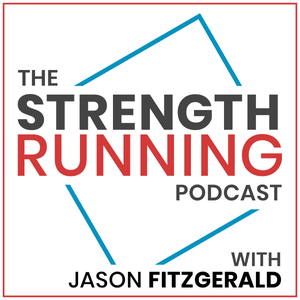 The Strength Running Podcast
The Strength Running Podcast
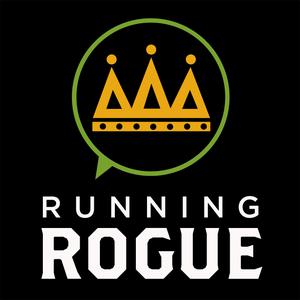 Running Rogue
Running Rogue
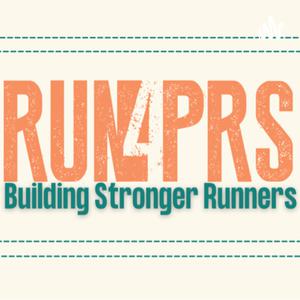 Run4PRs
Run4PRs
 The Running Explained Podcast
The Running Explained Podcast
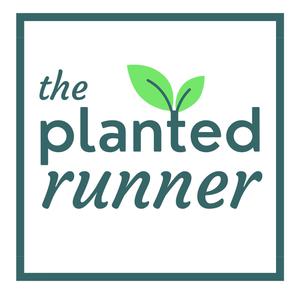 The Planted Runner
The Planted Runner
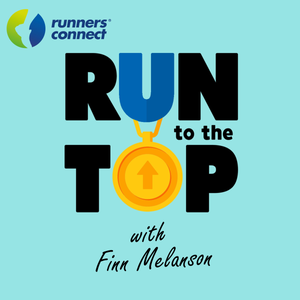 Run to the Top Podcast | The Ultimate Guide to Running
Run to the Top Podcast | The Ultimate Guide to Running